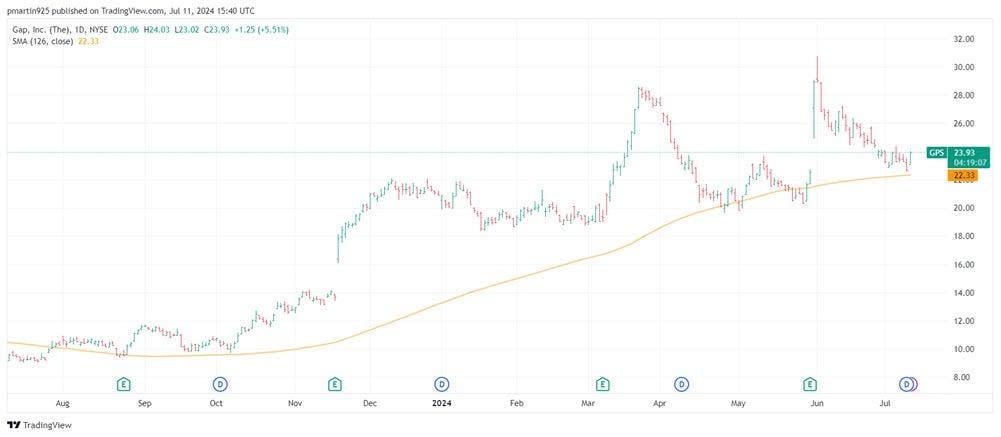Retail stock Gap (GPS) looked ready for a breakout this summer, barreling past the round-number $30 level on June 3 to score a roughly three-year highs of $30.75. However, the shares have since sputtered, taking a 17.5% haircut in June. The upside is this pullback has GPS testing a historically bullish trendline on the charts.
Gap stock is within one standard deviation of its 126-day moving average, per Schaeffer’s Senior Quantitative Analyst Rocky White. For the purpose of this study, White defines that as the equity trading above the moving average for 80% of the time over the past two months, and closing north of the trendline in eight of the last 10 sessions. The equity has run into this trendline five times in the last three years, and was higher one of month later 60% of the time, averaging a 9.2% return. From GPS’ current perch at $23.50, a move higher of similar magnitude would go a long way in filling the stock’s 30-day deficit of 10.7%.
Gap has been intriguing at Schaeffer’s for a while now because of its contrarian potential. Despite a healthy 14.4% year-to-date gain, half of the analysts in coverage rate the security a “hold” or worse. Short sellers, meanwhile, have increased their positions by 10.9% in the most recent reporting period. The 34.94 million shares sold short account for a healthy 15.8% of GPS’ total available float, and at its average pace of trading, it would take shorts four trading days to buy back their bearish bets.
In the options pits, the stock’s 10-day call/put volume ratio of 11.49 at the International Securities Exchange (ISE), Cboe Options Exchange (CBOE), and NASDAQ OMX PHLX (PHLX) sits in the 92 percentile of its annual range. Given the amount of short interest tied up in the equity, it’s possible some of these short sellers could be using calls to hedge against any unexpected upside.
With Gap’s quarterly report is not until Aug. 22, options premium has not yet seen a pre-earnings spike in volatility, per GPS’ Schaeffer’s Volatility Index (SVI) of 45%, which sits in the 10th percentile of its annual range. Furthermore, the security’s Schaeffer’s Volatility Scorecard (SVS) sits at 77 out of 100, meaning Gap stock exceeded option traders’ volatility expectations during the past year.
Read the full article here





